“In the Shinto sense, Tokyo, which lost the site of [Emperor Meiji’s] grave, won the site of his spirit. It now rests in Meiji Shrine, a magnificent but restrained version of the Toshogu, the great shogunal shrine in Nikko, to which has been added an outer worship hall much like the one at Heian Shrine in Kyoto, and for the main building, a roof ridge trimmed with the extended crosspieces and horizontal logs of the ancient shrines of Izumo and Ise.”
– Meiji Revisited: The Sites of Victorian Japan, by Dallas Finn, 1995
See also:
Dedication of Meiji Shrine, Tokyo, 1920.
Meiji Shrine Outer Garden & Meiji Memorial Picture Gallery under construction, c. 1925.
“Structures for the veneration of the deceased emperor and empress, and the 700,000m2 of forest-land enveloping them, took their place in the Tokyo landscape. The year was 1920. Six years later, Paul Claudel, poet and French ambassador to Japan, reflected on this site in his essay ‘Meiji’:
‘It is both vestige and support of the spirit. Its name summons the enshrined presence, and so gives life to a memory between that presence and us; a dialogue is formed; a shared knowledge and understanding are born.’
“… The name of this place to which [he] refers is Meiji Shrine. Dedicated to the spirits of Emperor Meiji and Empress Shoken, it is renowned as one of the most popular shrines in all Japan, not least because it plays host to more visitors during the three days of New Year celebrations than any other site in the country.
“In February 2009, Hillary Clinton arrived in Tokyo on her first overseas tour as Secretary of State in the Obama administration, and visited Meiji Shrine. When a reporter asked her why, she responded, ‘To show respect toward the history and culture of Japan.'”
– Sacred Space in the Modern City: The Fractured Pasts of Meiji Shrine, 1912-1958, by Yoshiko Imaizumi, 2013
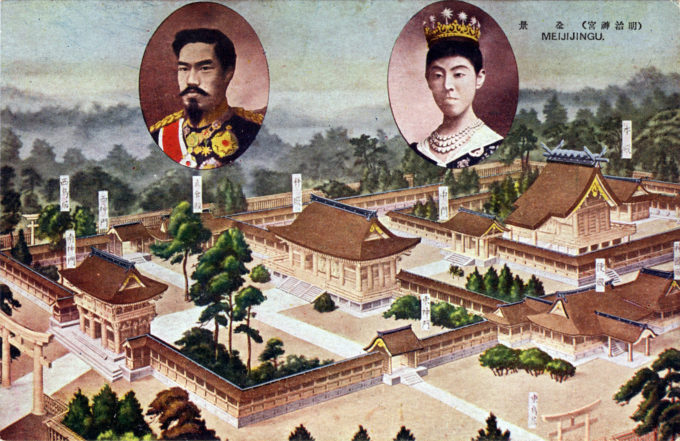
Emperor Meiji and Empress Shoken, aerial view of Meiji Jingu, c. 1930. The main shrine entrance is at lower-left.
- “The main building of Meiji Shrine”, c. 1930.
- Meiji Shrine commemorative postcard, 1930.
- Meiji Shrine commemorative postcard, 1930.
- Meiji Shrine commemorative postcard, 1930.
“When Emperor Meiji died in 1912, he was interred in Fushimi, outside Kyoto, but it was soon decided to honor his contribution to the modernization of Japan by creating a shrine for him in Tokyo. An iris garden in an area of Tokyo where Emperor Meiji and Empress Shōken had been known to visit was chosen as the building’s location. The designated site had belonged in the Edo period to the Ii family, who were daimyo of Hikone (now in Shiga prefecture). In the Meiji period, it became an imperial estate. The project became a vast city-planning and landscape design undertaking.
“Construction began in 1915, and the shrine was built in the traditional nagare-zukuri [streamlined roof] style and is made up primarily of Japanese cypress and copper. It was formally dedicated in 1920, completed in 1921, and its grounds officially finished by 1926.
“The shrine Treasure Museum was the subject of a competition that called for a design evoking traditional Japanese architecture. In the end, the project was given to Shintaro Oe, a graduate of the Tokyo Imperial University who specialized in religious architecture. Raised on pillars, the structure is marked by horizontal striations that, despite generous window and door openings, suggest the azekura-zukuri, a form of log construction used in ancient storehouses.
“Many of the original buildings were destroyed during the Tokyo air raids of World War II. The present iteration of the shrine was funded through a public fund raising effort and completed in October, 1958.”
– Wikipedia
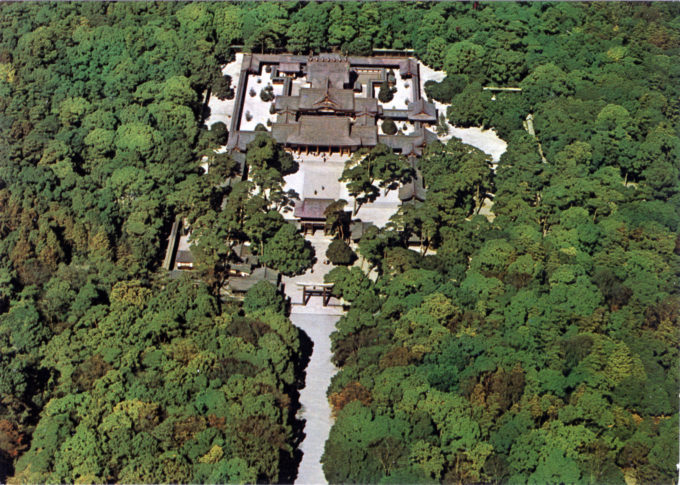
Aerial view of Meiji Shrine, c. 1970. The shrine is located in a large forest of evergreen and deciduous trees covering some of 700,000 square-meters (about 175 acres), consisting of 120,000 trees of 365 different species donated by people from all parts of Japan when the shrine was first established. Every tree was chosen based on how it would look 100 or 200 years in the future. The original buildings on the grounds were destroyed by wartime firebombing in 1945. Rebuilt after the war, Meiji Shrine reopened in 1958.


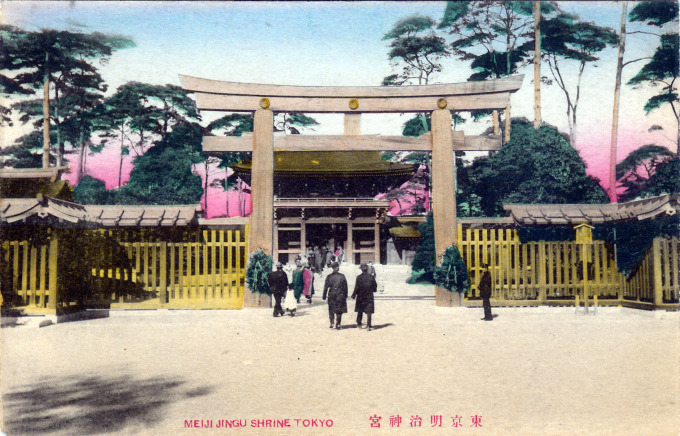
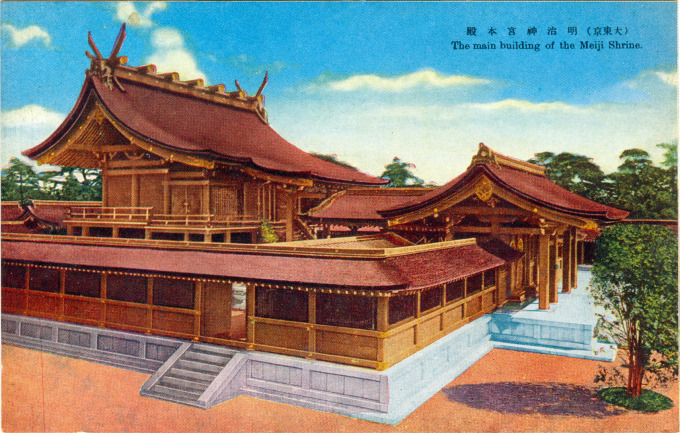
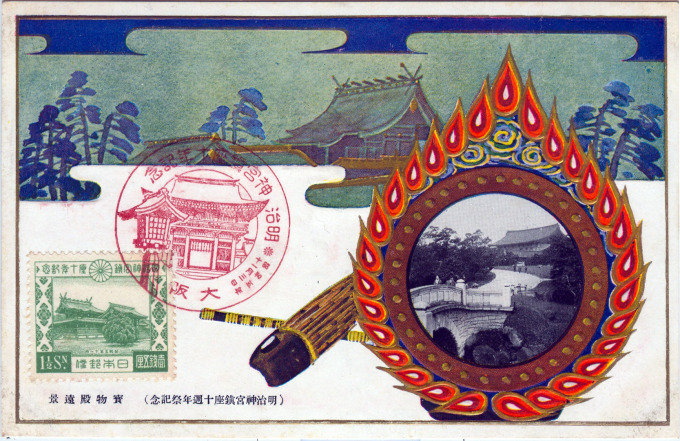
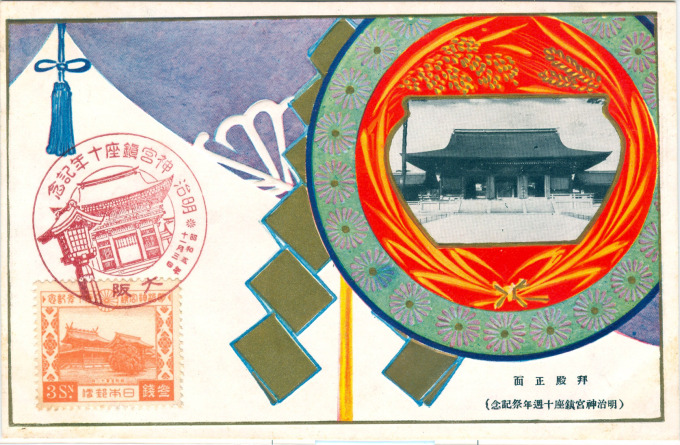
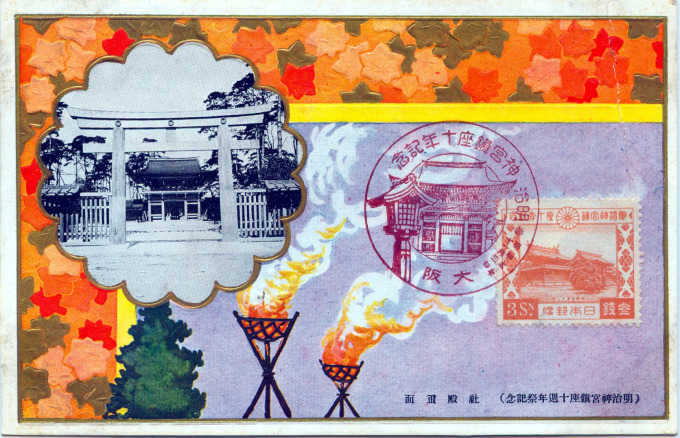
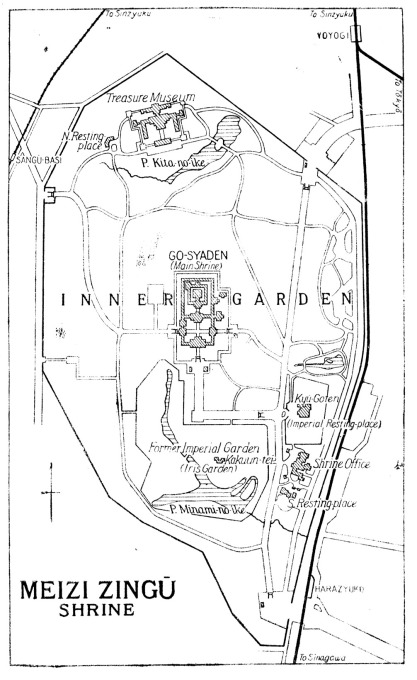
Pingback: japon vintage | tokyo fever
Pingback: Taisho Mausoleum, Hachioji, c. 1930. | Old Tokyo
Pingback: Tokyo Memorial Temple to Great Disasters, Sumida-ku, c. 1930 | Old Tokyo
Pingback: Emperor Pu Yi, Tokyo, 1935. | Old Tokyo
Pingback: Meiji Shrine Outer Garden & Meiji Memorial Picture Gallery under construction, c. 1925. | Old Tokyo
Pingback: Dedication of Meiji Shrine, Tokyo, 1920. | Old Tokyo
Pingback: Dedication of Meiji Shrine, Tokyo, 1920. | Old Tokyo
Pingback: Yoyogi Superguide | Ten Minute Tokyo